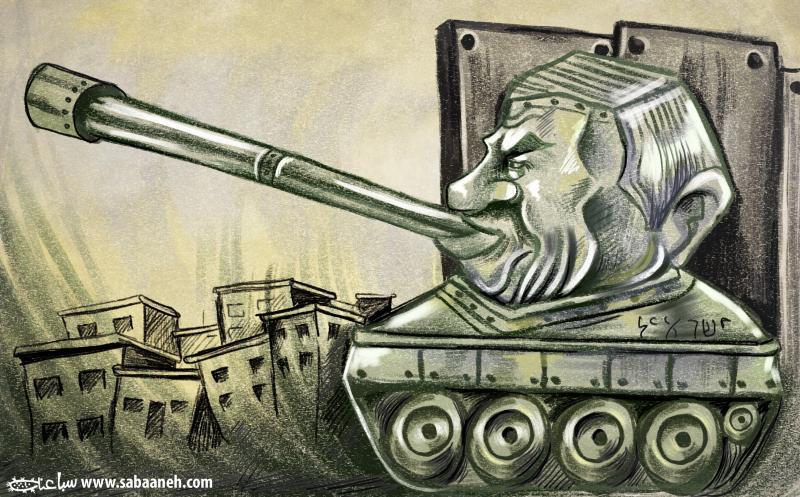
The purpose of this article is to create unity instead of the current animosity between the good and decent people who identify as “pro-Israel” and the good and decent people who identify as “pro-Palestine.”
How? By demonstrating that the PURPOSE of Israeli government violence against Palestinians—including one of its openly declared purposes of enlarging Israel geographically while making the Palestinian population in it be as small as possible—is NOT, as Israeli leaders falsely claim, to make Jews safe but, on the contrary, to enrichen Jewish billionaires and facilitate their economic and political control of working class Israeli Jews.

Zionism is an ATTACK on ordinary Jews (as well as an attack on Palestinians; please click this link to read in detail what Zionism means and how it oppresses Palestinians). It is therefore anti-Semitic (meaning anti-ordinary-Jewish-people) NOT to oppose Zionism.
As the facts recounted below make clear, Israel is not a state of the Jewish people; it is a state of—controlled by—the Jewish billionaires who have contempt for ordinary Jews, who oppress them terribly and have no genuine concern for their welfare.
As discussed below, the reason why the Israeli ruling class treats Palestinians like dirt is not simply to grab more land from them but to provoke their anger and violence against Israel so as to make them be perceived by Israeli Jews as a frightening existential threat, a bogeyman enemy that enables the Israeli ruling class, by pretending to protect Israeli Jews from their “real enemy,” to control ordinary Israeli Jews whom it oppresses economically—severely!—to enrich the billionaires.
The stated goal of Israeli violence—to grab as much land for Israel as possible and have as few Palestinians on it as possible in order to make Jews safe—is the official goal of Zionism, but this stated goal is half lie and half-truth. The part about the removal of Palestinians being for the purpose of making Jews safe is a lie. The part about wanting to seize land owned by Palestinians is true but only because it enables the Jewish upper class to grab more wealth for itself.
The stated goal of Zionism acts as a pretext (designed to get the support of Israeli Jews who are told it is necessary to make them safe). It is a pretext for attacking Palestinians for two real but unstated reasons: 1) to enrich the Zionist upper class by theft of Palestinian property and, by letting Jews own homes stolen from Palestinians, to make ordinary Jews and Palestinians view each other as the enemy; and 2) to make Palestinians be so angry at Israel (supposedly the “state of the Jewish people”) that they can be portrayed as the frightening bogeyman enemy of Jews that the Israeli billionaire ruling class needs and uses to control and economically oppress Israeli working class Jews to get even richer.
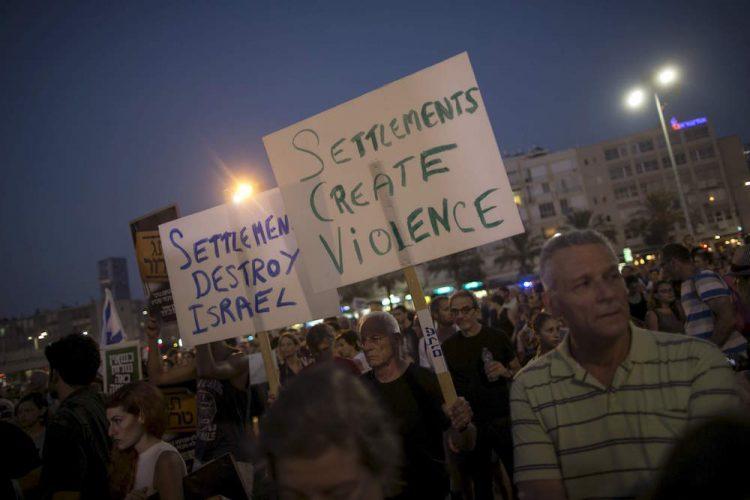
The Israeli billionaire ruling class knows that, as long as Israeli working class Jews think that the government it controls is protecting them from the “real enemy” (Palestinians), then they will not mount a serious challenge to the power of that billionaire ruling class despite the serious grievances (as described below) they have against it.
The Israeli ruling class relies on, and funds, Hamas in order to keep ordinary Israeli Jews frightened of Palestinians. For evidence that Israel funds Hamas and works to keep it in power in Gaza, go here. The truth is that, if the Israeli ruling class stopped treating Palestinians like dirt, then most Palestinians would view Hamas’s violent terrorism against ordinary noncombatant Jews—and any advocacy whatsoever of violence against people just because they are Jews—as criminally immoral behavior. Please read my “What Ordinary Palestinians Want” in this regard.
Zionism Is About Making Sure The Movement Of Ordinary Israeli Jews For Economic Equality Fails
What follows is an analysis of how the Israeli ruling class oppresses the Israeli Jewish working class, possibly the most under-reported fact in the Western mass media, and the key fact that explains the actions of the Israeli and U.S. governments.
Israel has third highest gap between rich and poor in the world.
21% of Israelis live below the poverty line, making Israel the country with the highest percentage in the West.
Almost half of Jerusalem is in poverty: How do they survive?
Charity, food baskets and tough realities are the daily struggles faced by families in Jerusalem.
For the 47% of Jerusalemites (out of 971,000 residents in the city) defined as living under the poverty line, it is a daily and impossible choice between bread and milk, between diapers and medicines.
“Thousands of Israeli Holocaust Survivors Still Living in Poverty, Fighting for Recognition: Seventy years after the end of World War II, some 20,000 aging Holocaust survivors receive little or no support from Israel, and 45,000 live under poverty line.”
Israeli Jews Fight Back Against the Government
In July 2011 the people in Israel (mainly, but not only Jews) launched a huge wave of protests against the Israeli government over the issue of their economic impoverishment.
“The 2011 Israeli social justice protests (Hebrew: מְחָאַת צֶדֶק חֶבְרָתִי), which are also referred to by various other names in the media, were a series of demonstrations in Israel beginning in July 2011 involving hundreds of thousands of protesters from a variety of socio-economic and religious backgrounds opposing the continuing rise in the cost of living (particularly housing) and the deterioration of public services such as health and education. A common rallying cry at the demonstrations was the chant ‘The people demand social justice!’
“As the protests expanded during August 2011, the demonstrations began to also focus on other related issues relating to the social order and power structure in Israel.”
The movement kept growing and growing, with mass demonstrations and people pitching tents on Rothschild Boulevard in Tel Aviv. The movement reached its peak on September 3, 2011:
“On Saturday, September 3, an estimated 450,000 people participated in several demonstrations which were held over various locations across Israel and which were referred to by protest organizers as ‘The March of the Million.’
“In the Tel Aviv march rally, which was held between the Rothschild Boulevard and the State Square, an estimated 300 thousand protesters participated though using proprietary technology to measure mobile phone signals, an Israeli start-up gave a reduced estimate of the crowd of a still impressive 150,000 people in Tel Aviv. Over 100 thousand people demonstrated throughout the rest of Israel in various demonstrations (40 thousand in Jerusalem, 30 thousand in Haifa, 15 thousand in Afula, 8,000 in Kiryat Motzkin, 3,000 in Nahariya, 2,500 in Hadera, 3000 in Karmiel and Rosh Pina, 5000 in Kiryat Shmona, 10 thousand in Kfar Yehoshua, 500 in Arad, 800 in Mitzpe Ramon and approximately 1,000 in Eilat).[68][69][70]
“The next day, Channel 10 reported about an internal memo describing the demands of the organizers including 45 billion NIS which would obligate the government to increase the budget. The organizers proposed to make up for the shortfall with increased taxes of the rich, inheritance tax, and using surplus tax money.”
People were demanding basic economic things, such as affordable housing. Many Israelis could no longer afford to pay their rent. And the demonstrators wanted relief to come in part from “increased taxes of the rich.”
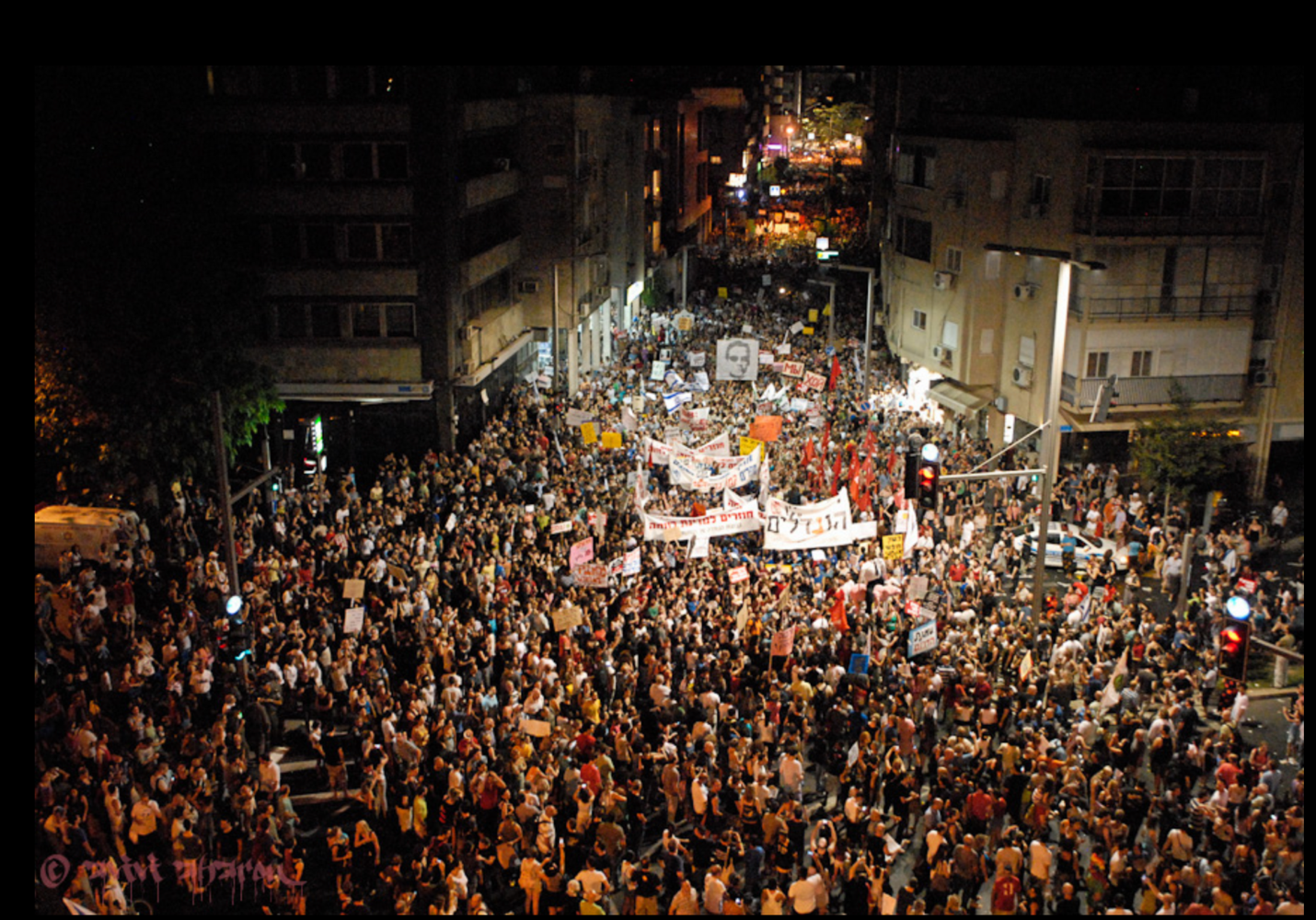
“The cost of living in Israel is horrendous,” said Daniel Levy, a senior fellow and director of the Middle East Policy Initiative at the New America Foundation. “It’s hellishly expensive compared to what people earn and the inequality gap has only gotten wider.”
The Guardian reported:
“Saturday’s demonstrations followed 50 days of protests that have rattled political leaders and led commentators and analysts to ask whether a new social movement would transform Israeli domestic politics for the next generation.
“The movement, which has the support of about 90% of the population according to opinion polls, began when a small group of activists erected tents in Tel Aviv’s prosperous Rothschild Boulevard in protest at high rents and house prices.
“Tent cities mushroomed across the country and protesters rallied behind the slogan: ‘The people demand social justice.’ Among the issues raised were the cost of housing, transport, childcare, food and fuel; the low salaries paid to many professionals, including doctors and teachers; tax reform; and welfare payments. The government established a committee led by the economics professor Manuel Trajtenberg to examine the protesters’ demands, which is due to report later this month.
“Demonstrators in Tel Aviv on Saturday night blew whistles and banged drums as they marched in a carnival atmosphere to a large square for a rally. Residents hung banners from balconies and cheered as they passed.”
Another newspaper subsequently reported:
“While the social justice movement lacked a centralized leadership or clear goals for most of the summer, this didn’t stop it from gaining widespread sympathy from constituencies far beyond its leftist base. ‘Even though the momentum was clearly from the Left, all kinds of Israelis joined,’ explained Yossi Klein Halevi, a senior fellow at the Hartman Institute in Jerusalem. ‘There were settlers…there were Haredim. It was seen as a national movement.’ A poll released one month prior by Israel’s Channel 10 found that 85 percent of the country supported the protestors, which would be impressive in its own right, but proved even more significant once the numbers were examined in depth.”
Note that the demonstrations had the support of around 90% of the population! This wave of demonstrations was not about grievances that only affected the Sephardic and Mizrahi Jews who are well known to be a sub-set of Jews in Israel who suffer from discrimination. No! It was against the economic oppression that harms ALL working class Israeli Jews as well as non-Jews. Nor were the grievances of the demonstrators issues that only affected Israel’s non-Jews: The Guardian article reported that some people on the Left did not like that the demonstrations were against how Jews as well as non-Jews were oppressed:
“The protests have been criticized by some on the left for not paying more attention to the discrimination suffered by Israeli-Arabs, who make up 20% of Israel’s population, or Israel’s occupation of the Palestinian territories.”
These demonstrations elicited solidarity between Jews and non-Jews. The Guardian reported:
“At a rally in Haifa, Shahin Nasser, an Israeli-Arab, said: ‘Today we are changing the rules of the game. No more coexistence based on hummus and fava beans. What is happening here is true coexistence, when Arabs and Jews march together shoulder to shoulder calling for social justice and peace. We’ve had it.’”
Another Guardian article reported on how the protesters included “middle class” people (aka working class people better off than other working class people):
“The Facebook-driven tent villages across Israel have echoes of the pro-democracy movements across the Middle East, but Nadav was quick to point out important differences. ‘This is a middle-class protest, focused on one issue. People in Egypt didn’t have a lot to lose. They had no civil rights and no trust in their government.’ But, he added, ‘I’ve kind of lost my trust in my government too because it doesn’t serve my needs.’
“The Israeli government is alarmed at the spread of the protests and how the issue has united left and right, religious and secular, and the middle-class with their less-affluent fellow citizens.
“The housing protest swiftly followed a widespread consumer boycott of cottage cheese in protest at the high cost of dairy products. Dairy companies were forced to cut prices, and the government initiated a review of the industry.”
An indication of the anger fueling the demonstrations is the fact that a small businessman, a Jew named Moshe Silman, during a 2012 demonstration, committed suicide by self-immolation; here is what Wikipedia reports about his suicide letter:
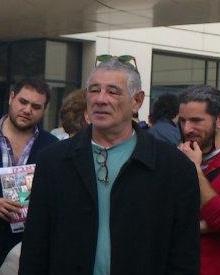
“Silman set himself on fire during a social justice demonstration held on 14 July 2012. In the suicide letter he passed out before he burnt himself, he accused the state of Israel and the welfare system of failing to treat disadvantaged people in his situation. He blamed Prime Minister Benjamin Netanyahu and the Finance Minister Yuval Steinitz for the economic policy that led him to commit suicide: ‘I hold the State of Israel, Bibi Netanyahu and Steinitz, the bastards, accountable for the humiliation which the disadvantaged citizens, go through every day, as the rich and the government workers take from the poor.’”
Clearly, there was working class solidarity that frightened the Israeli ruling upper class!
Zionism Killed the Movement
What did Prime Minister Netanyahu do? Did he grant the demands of “his people”? No! He killed the movement by letting the Zionist ideology do its job: demanding that the demonstrators (the Jews, at least) act “patriotically,” i.e., support their [billionaire-controlled] government in the fight against “the real enemy”: Palestinians. When Hamas fires its rockets onto Israeli noncombatant civilians it greatly helps Israeli leaders such as Netanyahu to control the rebellious Israeli working class! Netanyahu killed the movement with Zionism. Here’s how.
The “March of the Million” took place shortly after an attack (on August 18) in which Palestinians killed eight Israelis and Israel responded with an air attack. In response to the Palestinians’ attack, “protest organizers decided that the demonstrations planned for that Saturday would still go ahead, but as silent candle-lit marches without speeches or music. From this point on, movement spokespeople’s statements began to pander directly to sentiments of vulnerability and patriotism.” Fear of the “real enemy”—Palestinians—began to demobilize the movement.
A Guardian article —one day following the “March of the Million” that was the peak of the movement—reported another example of how the bogeyman enemy of Palestinians, which was created by the Zionist ethnic cleansing of Palestinians, was used to demobilize this huge Israeli working class movement against the Israeli billionaire ruling class:
“Weekly demonstrations, whose turnout had been steadily building, were suspended for two weeks after an attack by militants near the Egyptian-Israeli border in which eight Israelis were killed. Some commentators suggested that the movement had lost its momentum.”
Despite the huge participation and support for this movement, it did not win its demands. As the Israeli newspaper Haaretz reported/admitted five years later about the effect of the demonstrations, in an article trying to put a positive “successful” gloss on them:
“It may not have changed the fact that those who led the government then are still in charge today. It didn’t even change Prime Minister Benjamin Netanyahu’s basic way of thinking about the economy and society, and it didn’t change the relative amounts spent on civilian social services as a percentage of GDP. These have all remained as they were.”
Preventing Israeli working class Jewish people from winning their struggles against their oppression by the billionaire Jewish ruling class is the very purpose of Zionism. It is the purpose of the brutal and violent ethnic cleansing of non-Jews (Palestinians) from most of Palestine: to create a bogeyman enemy with which to frighten and control and thereby exploit and oppress working class Israeli Jews.
As long as the Israeli billionaire ruling class can keep most Israeli working class Jews mortally frightened of Palestinians as “the real enemy,” a veritable existential enemy, then the ruling class can be confident that these Israeli Jews, despite their real grievances against the Israeli ruling class, will limit how far they will go to challenge its power over them because they view it as their protector against their real enemy.
Until Israeli Jews see that Palestinians are not their enemy but indeed their ally against their real enemy, they will continue to remain oppressed by the Israeli ruling class.

This anti-working-class function/purpose of Zionism is seldom mentioned explicitly in the mass media. But there are indirect references to it. Here is one, reported by The Christian Science Monitor, that makes the point by noting that, when the dangerous bogeyman enemy is not in the news, then working class people feel more free to stand up against the Israeli ruling class:
“Lull in Palestinian violence turns Israelis’ attention to pocketbook issues
“Netanyahu has touted himself as a responsible economic leader who supports liberalization amid a globalized economy, but the public also remembers him cutting social-welfare payments and pushing privatization of state companies as finance minister in the first half of the 2000s.
“‘The housing is a symptom … . Although there is a really good macroeconomic aggregates like GDP [gross domestic product] growth and unemployment, the problem is that we have very large income inequality,’ says Momi Dahan, an economics professor at Hebrew University.
“He says that such issues are coming to the fore because of a relative low in Palestinian violence.
“‘When it is quiet in the area of security, then all of the other problems come to the surface,’ Prof. Dahan says. ‘People are sick of the rules where some people get a six-digit salary, and a cleaning woman or a cashier has a hard time feeding their kids.’”
At the beginning of the 2011 demonstrations in July, The Christian Science Monitor reported about how Israelis were able to focus on their oppression by the Israeli upper ruling class (aka “pocketbook issues”) when their fear of Palestinians (aka “Israeli-Palestinian violence”) was relatively low:
“Widespread fatigue with talks about an ever-elusive peace agreement, together with a relative low in Israeli-Palestinian violence, has given new momentum to such pocketbook issues.
“‘There’s all the time discussion of the occupation. But the real occupation is not the occupation of Gaza or the West Bank. It’s the economic occupation,’ says Amit Adler, a writer and spokesman for the Facebook-organized protest. ‘It is all a distraction. We want to focus on the real issues. It’s the economy, stupid.’”
The flip side of the coin, of course (which The Christian Science Monitor did not point out), is that, when “Israeli-Palestinian violence” is at a relative high, then that takes away “momentum to such pocketbook issues.”
Chemi Shalev, writing in his Haaretz newspaper article about why the Israeli government uses over-the-top detention of individuals who support the Boycott, Divestment and Sanctions (BDS) movement, noted that it is for the purpose of creating an exaggerated sense of fear in Israelis out of proportion to the real danger BDS poses to Israel’s government:
“For Netanyahu and his partners, who wither when Israelis feel safe, and thrive when they feel threatened, isolated, and unfairly maligned, it’s a virtual slam dunk.” [Cited by Sylvain Cypel in The State of Israel vs. The Jews, location 2159 e-book version.]
Americans old enough to remember the effect of 9/11 (the September 11, 2001, attack on the NYC World Trade Center and Pentagon by—supposedly at least—Muslim terrorists that killed almost 3,000 people, mostly civilians) on anti-establishment activism know that it totally put the kibosh on all such activism because people felt that it was unpatriotic to go against “our government” that was defending us against “the terrorists.” The events of 9/11 prompted a “rally around the flag” response, as does any perceived attack by a foreign enemy. The world-wide anti-globalization movement, which was described even by some in the mass media as an anti-capitalism movement, was at its peak just before 9/11 but then virtually vanished as a result of 9/11.
In Israel, the government can use the “Palestinian conflict” to make it seem like a 9/11 attack whenever it needs to put the kibosh on pro-working class activism. This is why there is a “Palestinian conflict” in the first place: It enables the Israeli upper class to control, dominate and oppress “its people.”
The Nation magazine, in a 2014 article titled “Israel’s Bloated War Machine: Prime Minister Netanyahu promotes and sometimes manufactures an endless series of national security crises. The military and settlers win; everyone else loses,” put it this way:
“Netanyahu controls the people of Israel by intimidating them with existential threats—if it’s not nuclear Iran, then it’s the tunnels of Hamas. If not ISIS, then Hezbollah in Lebanon. If not an international flotilla of solidarity activists trying to break the blockade on Gaza, it’s anti-Semitism taking over Europe. The premier has led his people to believe that it’s them against the world.”
Zionist Israeli leaders have worked very hard and unfortunately very successfully—with help from certain anti-working class Palestinian leaders such as the leaders of Hamas, as I discuss here—to make Jewish Israelis fear (and hence hate) ordinary Palestinians. A 2021 RAND Corporation study of Israeli Jewish opinion found:
“‘One of our key goals was to determine if there were areas of overlap in opinions and feeling among Israelis and Palestinians that might offer avenues for negotiation, leading the parties closer to peace,’ said Daniel Egel, lead author of the report and an economist at nonprofit, nonpartisan RAND. ‘Sadly, the data show the opposite. The data highlight the deep distrust and profound animosity of each side for the other.’”
The social justice movement was unable to become a movement that could truly win its demands because it was unwilling to refute the Israeli government’s reason for not granting—paying for—those demands, namely that the money had to be used instead to pay for the bloated military and the expensive subsidies to the West Bank Israeli settlers for the purpose of enforcing the military occupation of the West Bank in order to (supposedly) protect Jews from the “real enemy”—Palestinians.
Using the government of Israel to carry out violent ethnic cleansing of Palestinians to make Palestinians angry at Israel and then portraying this anger as hatred of Jews so that Israeli Jews will in turn fear and hate Palestinians is the same divide-and-rule strategy that the American upper class in the southern states used to divide-and-rule working class Americans. They did so by using Jim Crow discrimination against Blacks to pit Black and White working class people against each other in order to oppress them both, as Martin Luther King, Jr., explained in a speech you can listen to and read here. The violent ethnic cleansing of Palestinians is no more about protecting ordinary Jews from harm than the racist Jim Crow laws were about improving the lives of the poor Whites!
The Israel Ruling Class Is Oppressing Ordinary Jewish Israelis
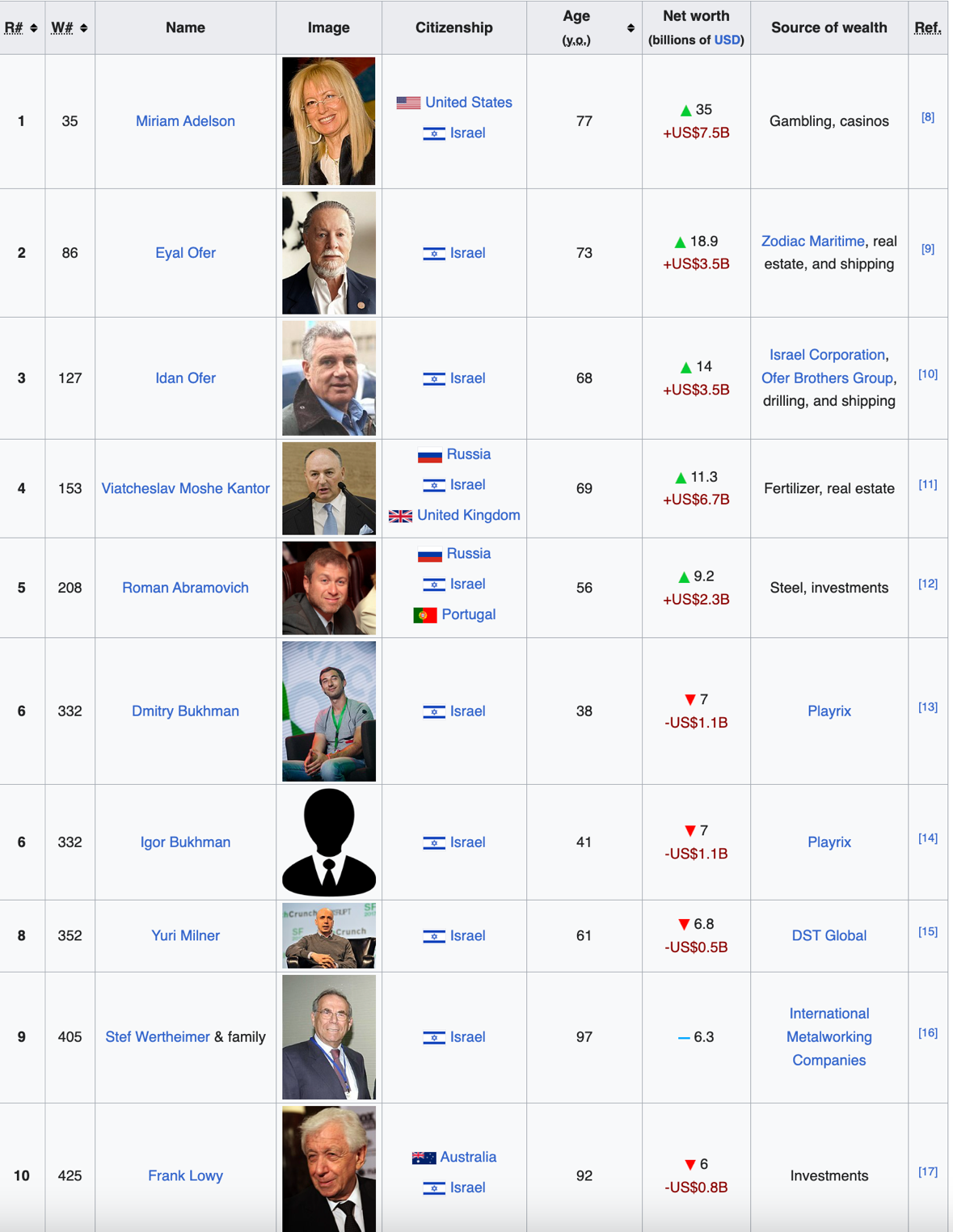
The French Le Monde diplomatique in 2003 published an article titled “Israel’s age of austerity,” in which it reported the following:
“There is another campsite of the unemployed and homeless in Tel Aviv. It was set up in August 2002 in one of the richest districts on Kikar Medina (State Square), which the protesters call Kikar HaLehem (Bread Square). Dozens live there, with their children, in old buses or tents. So far, all attempts by the local authority and property owners to have them removed have failed.
“‘The choice of place is no accident,’ says Israel Twito, 38, a divorcee who is bringing up three daughters alone. ‘The contrast between our miserable campsite and the neighborhood’s luxury shops and apartment blocks symbolizes the ever-widening abyss between rich and poor.’”
Sh’ma, A Journal of Jewish Ideas, in 2003 wrote in an article titled, “Penury and Hunger in Israel,” how
“vociferous segments of the public are demanding that governmental resources be channeled to welfare and other domestic resources, rather than to strengthening settlements beyond the green line.”
The Jewish Daily Forward in 2006 reported:
“Israel’s growing population of retirees has been reduced to a state of profound economic insecurity in recent years, as self-styled economic reformers have hollowed out the Jewish state’s time-honored system of care for the elderly. Pensions have been frozen. Social security payments, known in Israel as national insurance, have been relentlessly whittled away—cut by 35% in a single decade. Health care and prescription drug coverage have been slashed, along with funds for senior housing and assisted living.”
The Forward explained the “meteoric rise of the Pensioners’ Party” in the April 2006 election this way:
“And then there was the simple, glaring fact of poverty. Too many Israelis had reached the point where their own personal security seemed more precarious than their country’s.”
In June 2015, rt.com titled an article “Israel’s poor getting poorer, income gap among largest in developed world – study” that reported:
Israel remains among the poorest performing countries in terms of economic equality, while poverty depth, that is how poor the poor are, has worsened, a new study says. A big cutback in government social welfare programs is one of the causes.
In May of 2017 rt.com titled an article, “Israel’s economy heading for disaster, experts warn,” which said:
“A report released by the Taub Center for Social Policy Studies in Israel shows the country has the highest poverty rates among OECD countries and faces ‘worrisome trends’ that could have disastrous effects on its growing population…The country ranks 22nd out of 34 of the OECD (The Organisation for Economic Co-operation and Development) regarding GDP and takes the 24th spot within the market income poverty rate. Among developed countries, Israel has the highest percentage of its population living below the poverty line.
On December 9, 2021 en.globes.co reported on an economic report about Israel in an article titled, “World Inequality Report: Israel among most unequal countries“:
The report has a section on Israel, headlined, “high-income inequalities in a high-income country. The report says, “Israel is an affluent country. The average national income for the adult population is equal to €PPP43,100 (or NIS223,040). This is higher than affluent Western European countries such as France (€PPP36,300) and the UK (€PPP32,700) but lower than the US (€PPP54,300). However, Israel is one of the most unequal high-income countries. The bottom 50% of the population earn on average €PPP11,200 or NIS 57,900, while the top 10% earn 19 times more (€PPP211,900, NIS 1,096,300). Thus, inequality levels are similar to those in the US, with the bottom 50% of the population earning 13% of total national income, while the top 10% share is 49%.”
Explaining the historical context, the report said, “Overall, income inequality has remained at a very high level in Israel over the past 30 years.
On January 19, 2023 the Jerusalem Post reported:
More Israelis are poor as gap widens between haves, have-nots
At 87 years old, Haim Margolis comes home to an empty refrigerator every evening.
The Extent of Poverty in Israel
Margolis isn’t alone. Israelis are consistently getting poorer. Despite the economy which grew in 2021, the gap between the rich and poor also grew wider and more people entered the cycle of poverty, a cycle that is a struggle to break.
According to the Israeli National Insurance Institute’s 2021 report on poverty and social gaps in the country, almost 2 million Israelis live in poverty, a little over 20% of the population. The Organization for Economic Cooperation and Development points to Israel as one of the countries with the highest economic disparity, with the rate of working poor in Israel also very high.
The Gini Index, which measures income inequality, also puts Israel in an undesirable location compared to other developed welfare states. Poverty in Israel can be attributed to many factors. Ultra-Orthodox Jews and the Arab minority tend to have larger families, often earn lower incomes, and have less access to education. Higher-paying jobs are concentrated in central Israel, where it is more expensive to live. Public transportation still needs to be significantly improved, and until then, access to job centers is limited for people who do not own private cars. Salaries in the public sector, one of the largest in the country, tend to be low and have not been updated in years.
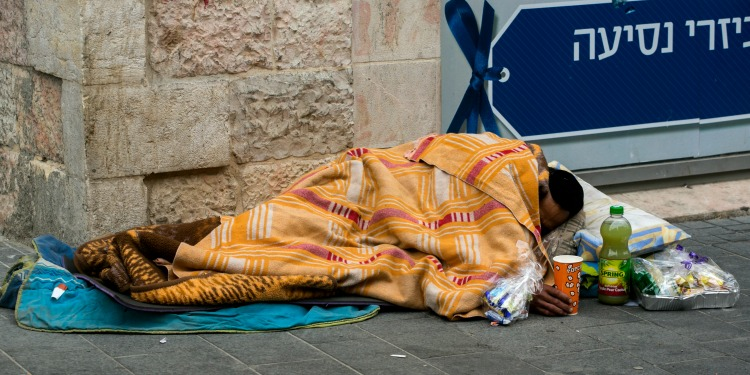
Israel’s Poverty Minimum Wage
In 2014 Israel’s national labor union, Histadrut, won an increase in the minimum wage by threatening a general strike. This strike threat resulted in the minimum wage rising to 5,000 NIS/month, which equates to $8.77/hr. As absurdly low as this wage is, it is even worse when one takes into account that the prices of what working class people must buy are far higher in Israel than in the United States, as you can see in detail here. For example, when a gallon of regular milk cost $3.24 in the U.S. it cost (the equivalent in U.S. dollars) $6.85 in Israel!
In fact, it is actually even worse because “11% of Israeli workers earn less than minimum wage.”
“In 2017 33.6% of Israeli workers earned no more than the minimum wage, up from 30.8% in 2015, indicating that many of the new jobs are low-paying jobs. Israel’s middle class has shrunk more than almost all those of OECD countries except Estonia and Lithuania, with only 54% of households considered middle class.” As noted above, however, the huge 2011 demonstrations against the government in Israel were considered to be demonstrations by the middle class against its economic oppression.
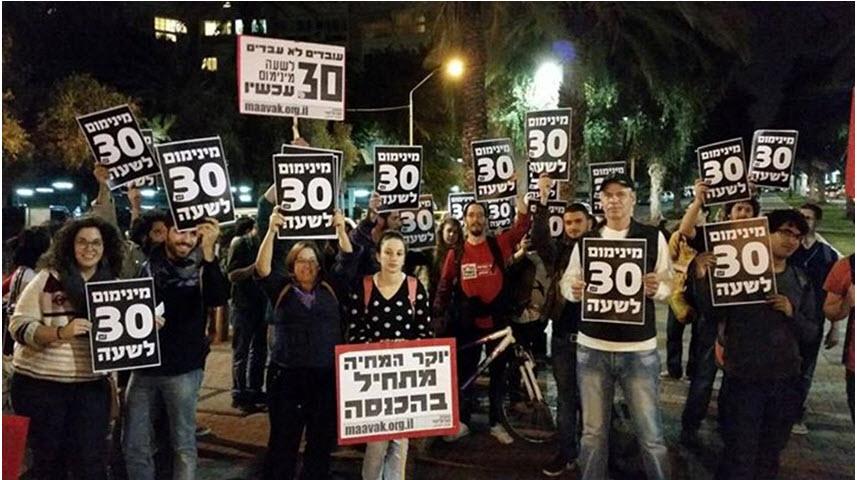
Israeli workers are frequently forced to go on strike. Here are some examples:
2015 Strike ends in victory for Israeli chemical workers
2016 Israel: Tel Aviv labor strike may delay immigration processing
2017 Strike over Teva Pharm job cuts briefly shuts down Israel
2018 Israel braces for general strike on Wednesday, government says may be averted
More recent articles about the poverty of Israelis are the following:
a. Israel’s Greatest Stigma: Poverty
b. Israel’s poverty rate rises as standard of living crashes, report finds
c. Israel’s Middle Class Slides Into Poverty
e. 1.8 million Israelis, half of them children, live in poverty—government
f. About two million Israelis live below the poverty line—report
g. February 11, 2019: Israeli “Yellow Vests” Swarm Knesset: Cost Of Living Out Of Control: “If the price of electricity goes up one shekel, we will plan protests the likes of which haven’t been seen in the State of Israel”
h. June 27, 2018: “The Israelis struggling with poverty and the high cost of living”: “We came with our savings and it was not long before we became disenchanted. We found ourselves in an apartment with leaks and mould on the ceiling, for a rent three times higher than in Paris,” she recalls, a year after going back to France.”
i. Tel Aviv: Poverty and Eviction in the World’s Most Expensive City: Residents of Givat Amal Bet neighborhood forced out to make way for further gentrification.
Even Holocaust Survivors!

a. Thousands of Israeli Holocaust Survivors Still Living in Poverty, Fighting for Recognition: Seventy years after the end of WWII, some 20,000 aging Holocaust survivors receive little or no support from Israel, and 45,000 live under poverty line.
b. A quarter of Israel’s Holocaust survivors living in poverty.
c. Holocaust survivors struggling to make ends meet in Israel: Ros Dayan survived horrors of Nazi persecution but now says she does not have enough money to buy food or clothes.
d. Holocaust Survivors Protest Israel’s Stipend Plan JERUSALEM, Aug. 5—Several dozen survivors of the Holocaust, supported by hundreds of younger relatives and supporters, marched in protest today in front of Prime Minister Ehud Olmert’s office, saying that a planned government stipend was too small, insulting both the living and the dead. Carrying signs that said, “Let us live in dignity,” the demonstrators demanded that Mr. Olmert issue a formal statement revoking a government decision to provide a stipend next year of 83 shekels, or about $20, a month to the country’s Holocaust survivors. A few wore yellow stars of David, reminiscent of the ones the Nazis forced Jews to wear, but many wore black T-shirts with the words in yellow: “The Holocaust is still with us—the survivors.”
The Wealth Distribution of Jews Versus Non-Jews
Those interested in knowing the wealth distribution of Jews versus non-Jews in Israel can find information about this in an academic journal and in this more accessible article (PDF). In Israel, non-Jews (about 25% of the population) are on average poorer than Jews. So what? Does this fact make the impoverished condition of the Holocaust survivors in Israel (who demonstrated against the Israeli government in 2007—see the links to this above) one iota better? Of course not!
Zionist Leaders Have Been Betraying Ordinary Jews Since The Holocaust
Zionist leaders have, since the Holocaust, been using ordinary Jews, for whom they had/have nothing but contempt, to gain and now control a state of THEIR own—not a state of, by and for ordinary Jews! Read about this in detail here.
“If I knew that it would be possible to save all the [Jewish] children in Germany by bringing them over to England and only half of them by transporting them to Eretz Israel, then I opt for the second alternative. For we must take into account not only the lives of these children but also the history of the people of Israel.”—David Ben-Gurion, 1938

Further Reading:
“Class Inequality in Israel” Why it is no favor to Jews to support Israel, and how REAL peace can be obtained.
“Israel’s Government Funds Hamas And Works To Keep It In Power”
“Israeli Leaders and Hamas Need Each Other”
“Evidence that Israeli/Zionist Leaders Want Jews to Die at the Hands of Apparent Anti-Semites.”
Click here to see my other articles about Palestine and Israel.
CovertAction Magazine is made possible by subscriptions, orders and donations from readers like you.
Blow the Whistle on U.S. Imperialism
Click the whistle and donate
When you donate to CovertAction Magazine, you are supporting investigative journalism. Your contributions go directly to supporting the development, production, editing, and dissemination of the Magazine.
CovertAction Magazine does not receive corporate or government sponsorship. Yet, we hold a steadfast commitment to providing compensation for writers, editorial and technical support. Your support helps facilitate this compensation as well as increase the caliber of this work.
Please make a donation by clicking on the donate logo above and enter the amount and your credit or debit card information.
CovertAction Institute, Inc. (CAI) is a 501(c)(3) non-profit organization and your gift is tax-deductible for federal income purposes. CAI’s tax-exempt ID number is 87-2461683.
We sincerely thank you for your support.
Disclaimer: The contents of this article are the sole responsibility of the author(s). CovertAction Institute, Inc. (CAI), including its Board of Directors (BD), Editorial Board (EB), Advisory Board (AB), staff, volunteers and its projects (including CovertAction Magazine) are not responsible for any inaccurate or incorrect statement in this article. This article also does not necessarily represent the views the BD, the EB, the AB, staff, volunteers, or any members of its projects.
Differing viewpoints: CAM publishes articles with differing viewpoints in an effort to nurture vibrant debate and thoughtful critical analysis. Feel free to comment on the articles in the comment section and/or send your letters to the Editors, which we will publish in the Letters column.
Copyrighted Material: This web site may contain copyrighted material the use of which has not always been specifically authorized by the copyright owner. As a not-for-profit charitable organization incorporated in the State of New York, we are making such material available in an effort to advance the understanding of humanity’s problems and hopefully to help find solutions for those problems. We believe this constitutes a ‘fair use’ of any such copyrighted material as provided for in section 107 of the US Copyright Law. You can read more about ‘fair use’ and US Copyright Law at the Legal Information Institute of Cornell Law School.
Republishing: CovertAction Magazine (CAM) grants permission to cross-post CAM articles on not-for-profit community internet sites as long as the source is acknowledged together with a hyperlink to the original CovertAction Magazine article. Also, kindly let us know at info@CovertActionMagazine.com. For publication of CAM articles in print or other forms including commercial internet sites, contact: info@CovertActionMagazine.com.
By using this site, you agree to these terms above.
About the Author

John Spritzler is a retired Senior Research Scientist at the Harvard T. H. Chan School of Public Health.
He is the editor of PDRBoston.org, the father of three boys and a long-time resident of Boston, MA. He is also the author of The People As Enemy: The Leaders’ Hidden Agenda in World War II (MONTREAL: Black Rose Books, 2003).
John can be reached at spritzler@comcast.net.

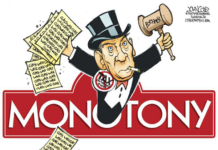


I especially enjoyed this sentence: “Until Israeli Jews see that Palestinians are not their enemy but indeed their ally against their real enemy, they will continue to remain oppressed by the Israeli ruling class”.
I agree – partly – with John Spritzler’s comments. It is not just Jewish billionaires, but Palestinian billionaires too who enriched themselves through slaughtering innocent people. Same a Iraqi negotiators for the late Saddam Hussein’s, Syrian negotiators for Bashar Al-Assad, war negotiators for Zelensky and Putin, members of the Sudanese government in charge of the civil war, etc, etc, etc, ALL benefit from the murder of of people and destruction of buildings and Nature.
But, such immorality can never be acknowledged, so politicians and Media Presstitutes have to falsely claim their action is to make people safe.
Me Spritzler, living in Boston. where so many “military death” millionaires live, should know what I’m saying.
Why do you think 450,000 Israelis demonstrated against the Israeli government in 2011 and had the support of 85 or 90% of the general Israeli population?
Although many studies indicate that there is a high level of poverty in Israel, other studies have shown that the standard of living is very high in Israel. One possible explanation for this is that some analysts have concluded that 25 % of Israel’s economy is underground in which people are making income and avoiding to pay the government income tax. The figures below suggest that the poverty rate may not be as high as many experts say:
Material prosperity
The following table contains statistics on the ownership of durable goods among Israeli households in 2015.[25]
Product Percentage of household ownership
Refrigerator 99.8%
Deep freezer 23.2%
Cooking and baking stove 35%
Baking stove 60.5%
Cooking stove 66.4%
Microwave 85.6%
Dishwasher 39.2%
Water purifier 35.9%
Washing machine 96.1%
Clothes dryer 41.1%
Air conditioner 89.1%
Vacuum cleaner 61.8%
Television set 87.5% (53.6% with more than one)
DVD system 33.8%
Cable or satellite television 59.2%
Satellite dish 16.6%
Digital convector 12%
Computer 80.3% (34.8% with more than one)
Internet subscription 74.3%
Tablet computer 40.9%
Gaming console 14.7%
One or more phone lines 69.2% (3.5% with more than one)
Two or more phone lines 3.6%
One mobile phone or more 96.9% (74.9% with more than one)
One car or more 69.7% (24.4% with more than one)
Central heating 3.7%
Flat heating 4.3%
Solar water heater 82.6%